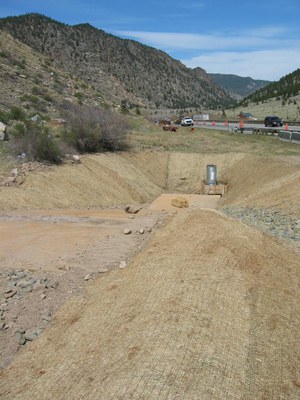Glossary
Stormwater quality terms and concepts can be confusing. Below are definitions of terms used throughout this website. Please contact Jean Cordova if there are any other terms or concepts that are unclear.
Allowable non-stormwater discharges to a storm drain system include landscape irrigation, diverted stream flows, rising ground waters, uncontaminated ground water infiltration, uncontaminated ground water infiltration to separate storm sewers, uncontaminated pumped ground water, discharges from potable water sources, foundation drains, air conditioning condensate, irrigation water, springs, water from crawl space pumps, footing drains, lawn watering, individual residential car washing, individual residential swimming pool and hot tub discharges, and individual residential street washing, water-line flushing, flows from riparian habitats and wetlands, flows from emergency fire fighting activities, and water incidental to street sweeping and that is not associated with construction.
Control Measures (previously BMPs)
 Control measures prevent or reduce the pollutants in stormwater discharges from the construction site. Controls measures are schedules of activities, prohibitions of practices, maintenance procedures, and other management practices to prevent or reduce the pollution of waters of Colorado. Control measures also include treatment, operating procedures, pollution prevention and practices to control site runoff, spillage or leaks, waste disposal, or drainage from the storage of materials. Control measures include structural and nonstructural controls and can be temporary (for construction sites) and permanent (after the construction is completed). Temporary control measures include silt fence, construction entrance/exit pads, and erosion logs. Permanent control measures include grassed swales and extended detention basins.
Control measures prevent or reduce the pollutants in stormwater discharges from the construction site. Controls measures are schedules of activities, prohibitions of practices, maintenance procedures, and other management practices to prevent or reduce the pollution of waters of Colorado. Control measures also include treatment, operating procedures, pollution prevention and practices to control site runoff, spillage or leaks, waste disposal, or drainage from the storage of materials. Control measures include structural and nonstructural controls and can be temporary (for construction sites) and permanent (after the construction is completed). Temporary control measures include silt fence, construction entrance/exit pads, and erosion logs. Permanent control measures include grassed swales and extended detention basins.
Final stabilization of a construction site is reached when all ground surface disturbing activities at the site have been completed, and uniform vegetative cover has been established with an individual plant density of at least 70% of pre-disturbance levels, or equivalent permanent, physical erosion reduction methods have been employed.
A silt fence is low, mesh fencing (usually black) that prevent silt, sand, and other contaminants from reaching storm drain systems and waterways.
Spill Prevention, Control, & Countermeasure Plan
This plan contains the following information:
- Identification of the spill cleanup coordinators
- Location of cleanup kits
- Quantities of chemicals and locations stored on site
- Label system for chemicals and Materials Safety Data Sheets for products
- Notification and clean up procedures to be implemented in the event of a spill for spills which do not enter state waters or are under reporting limits of the chemical of concern (diesel fuel, hydraulic fluid, motor oil, used hydraulic fluid and motor oil, tack oil)
- Significant spill procedures for spills of any size that enter state waters of have the potential to do so. CDOT's Erosion Control and Stormwater Quality Guide (current edition) contains spill notification contacts and phone numbers required in the SPCC plan
A conveyance system (including catch basins, curbs, gutters, ditches, man-made channels, or storm drains) that drains stormwater runoff from streets directly into Colorado waterways. Anything that enters CDOT's storm drain system is discharged untreated into Colorado waterways used for fishing, swimming, and providing drinking water.
The stormwater management plan comprises those contract documents containing the requirement necessary to protect and identify sensitive environments (state waters, wetlands, habitat, and existing vegetation), minimize the amount of disturbed soil, control and minimize erosion and sedimentation during and after project construction, prevent runoff from offsite areas from flowing across the site, slow down runoff, and reduce pollutants in stormwater runoff.
Stormwater runoff occurs when precipitation from rain or snowmelt flows over the ground. Impervious surfaces, like roads, prevent stormwater from naturally soaking into the ground. Stormwater runoff can pick up debris, chemicals, dirt, and other pollutants and flow into CDOT's storm drain system. Anything that enters CDOT's storm drain system is discharged, untreated, into Colorado waterways used for fishing, swimming, and providing drinking water.
